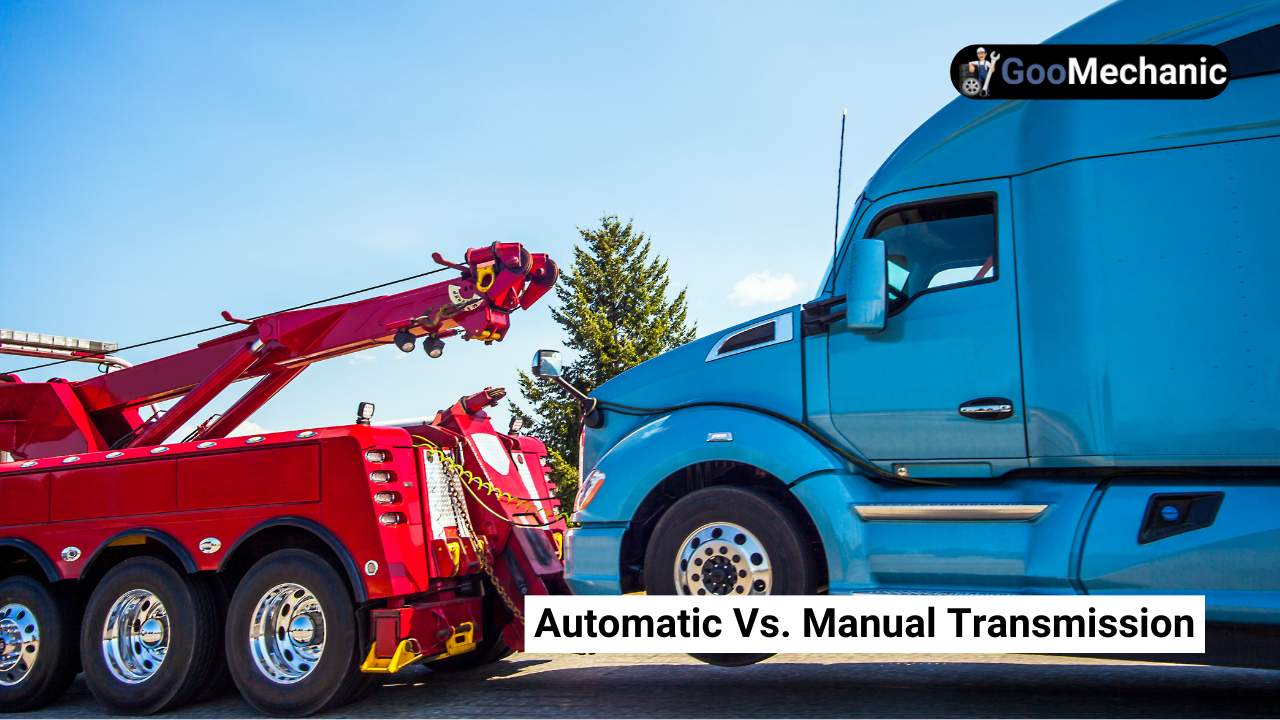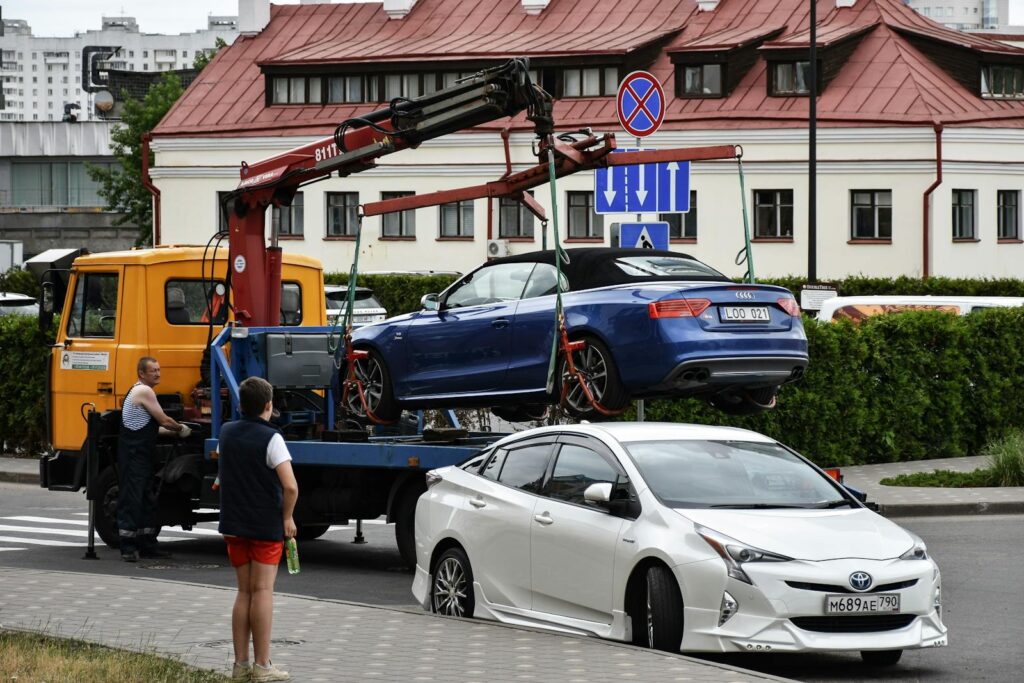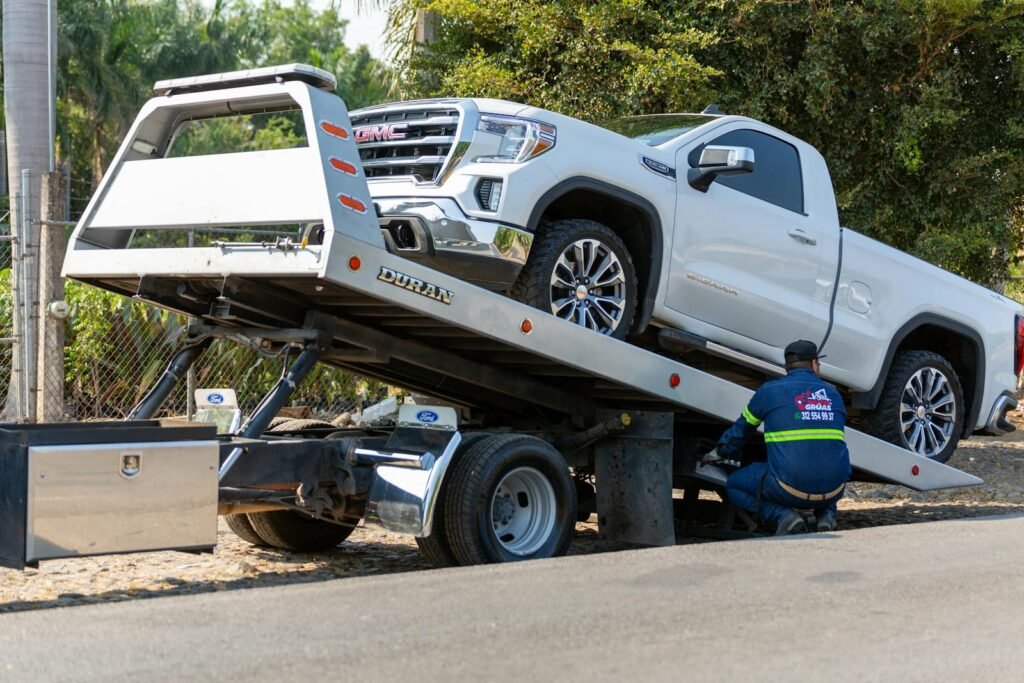When towing a car, it should generally be in neutral. This prevents damage to the transmission.
Towing a car requires careful attention to avoid damage. Placing the car in neutral is crucial. This step ensures the transmission remains safe. Always check the owner’s manual for specific instructions. Different cars may have unique requirements. Using a tow dolly or flatbed can also help.
These methods offer additional protection. Proper towing techniques extend your car’s lifespan. They also prevent costly repairs. Neglecting these steps can result in severe damage. Both automatic and manual transmissions need proper handling. Safety should always be a top priority. Following guidelines ensures a smooth towing process.
Introduction To Towing
Towing a car can seem tricky. Knowing the right steps is crucial. One common question is: Should the car be in neutral while towing? This depends on the situation and car type. Let’s explore the basics.
Towing Basics
Understanding the basics of towing is important. Here are key points:
- Always check the car’s manual first.
- Use the right towing equipment.
- Ensure the car is securely attached.
There are two main towing methods:
- Flat towing: All wheels on the ground.
- Trailer towing: Car is on a trailer.
Common Towing Scenarios
Different scenarios call for different towing methods. Here are some common ones:
| Scenario | Method | Gear Position |
|---|---|---|
| Manual transmission | Flat towing | Neutral |
| Automatic transmission | Flat towing | Neutral with engine running |
| Automatic transmission | Trailer towing | Park |
| Four-wheel drive | Flat towing | Neutral (transfer case) |
Always consult your car manual for specific instructions. Safety first!
Importance Of Transmission Position
When towing a car, the transmission position is crucial. It can impact the safety and health of your vehicle. Understanding this can save you from costly repairs. Let’s dive into why the transmission position matters.
Impact On Vehicle

Putting the car in neutral while towing prevents damage. It ensures the wheels can spin freely. This reduces stress on the transmission system. Keeping the transmission engaged can cause overheating.
| Transmission Position | Impact on Vehicle |
|---|---|
| Neutral | Prevents transmission damage |
| Engaged | Can cause overheating |
Neutral position also protects the drivetrain components. It minimizes wear and tear. This is essential for long-term vehicle health.
Safety Concerns
Safety is a top priority while towing. A car in neutral is easier to control. It reduces the risk of accidents. The car follows the towing vehicle smoothly. This is especially important on highways.
- Prevents transmission overheating
- Reduces strain on drivetrain
- Ensures smooth towing
- Minimizes accident risks
Always check your car’s manual for towing instructions. Different cars might have specific requirements. Following these guidelines ensures a safe towing experience.
Neutral Gear Explained
Neutral gear plays a crucial role when towing a car. Understanding its function helps ensure a safe towing experience. This section will explain what neutral gear is and when to use it.
What Is Neutral Gear?
Neutral gear is one of the positions in a car’s transmission. It disconnects the engine from the wheels. This allows the car to roll freely. In neutral, the engine can run without moving the car.
Neutral gear is often marked as “N” on the gear shift. It is commonly used in both manual and automatic transmissions. Knowing how to use neutral gear is essential for safe driving and towing.
When To Use Neutral
Using neutral gear is important in several situations. Here are key moments to consider:
- Towing: Always place the towed car in neutral. This prevents damage to the transmission.
- Starting the Engine: Use neutral when starting a car with a manual transmission.
- At Traffic Lights: In manual cars, shifting to neutral can reduce wear on the clutch.
Remember these key points to use neutral gear safely. Proper use of neutral gear ensures a smooth and safe towing experience.
Automatic Vs. Manual Transmission

When towing a car, the transmission type matters. Automatic and manual transmissions differ in how they handle towing. Knowing these differences can prevent damage to your vehicle.
Differences In Towing
Automatic transmissions need special care when towing. These transmissions have complex internal components. They rely on hydraulic pressure to operate. Towing an automatic car in neutral can cause damage.
In contrast, manual transmissions are simpler. They use a clutch and gears. Towing a manual car in neutral is usually safe. But always check the car’s manual for specific instructions.
Potential Risks
Towing an automatic car improperly can lead to serious issues. Here are the potential risks:
- Transmission overheating
- Gear damage
- Hydraulic system failure
Manual transmissions face fewer risks. But there are still potential issues:
- Clutch wear
- Gear misalignment
| Transmission Type | Safe Towing Method |
|---|---|
| Automatic | Use a flatbed or tow dolly |
| Manual | Can be towed in neutral |
Manufacturer Guidelines
Understanding the manufacturer guidelines for towing is crucial. Following these guidelines ensures the safety of both the car and the driver. Each car brand has specific instructions for towing. Ignoring these can lead to costly damages or even void the warranty.
Consulting The Manual
Your car’s manual is the best place to start. It contains detailed instructions on how to tow your car correctly. You will find specific steps and precautions to take.
Look for the section on towing procedures. It usually provides information on whether to tow in neutral. Some cars may require different steps. Always double-check to avoid mistakes.
Common Recommendations
While each car is unique, there are common recommendations across various brands. Below is a table summarizing these:
| Car Type | Towing Recommendation |
|---|---|
| Automatic Transmission | Tow in Neutral |
| Manual Transmission | Tow in Neutral |
| All-Wheel Drive | Consult Manual |
| Four-Wheel Drive | Consult Manual |
For automatic transmission cars, towing in neutral is common. This prevents damage to the transmission. Manual transmission cars also follow this rule often. For all-wheel and four-wheel drives, always consult the manual. These vehicles have complex systems that need special handling.
Remember, these are general recommendations. Your car’s manual should always be your primary source of information. Following the manufacturer guidelines ensures your car stays in good shape during towing.
Towing With Automatic Transmission
Many drivers wonder how to tow a car with an automatic transmission. Knowing how to do it correctly can prevent serious damage. This guide will help you understand the right steps.
Neutral Or Park?
Should the car be in neutral or park when towing? This is a common question. For most cars with automatic transmissions, towing in neutral is the safest option. This keeps the transmission from getting damaged. Towing in park can lock the wheels and cause issues.
| Gear Position | Result |
|---|---|
| Neutral | Wheels move freely |
| Park | Wheels are locked |
Always check your car’s manual for specific instructions. Some cars may have different requirements.
Special Considerations
There are special considerations when towing a car with an automatic transmission. Here’s what you need to know:
- Use a flatbed tow truck if possible. This avoids any transmission issues.
- Check the owner’s manual for towing guidelines. Some cars have unique rules.
- Use a tow dolly if a flatbed is not available. This keeps the drive wheels off the ground.
Remember, incorrect towing can lead to costly repairs. Always follow the recommended practices to keep your car safe.
Towing With Manual Transmission
Towing a car with a manual transmission requires special care. Incorrectly towing can damage your vehicle. This guide will help you understand the best practices. Follow these tips for safe towing.
Safe Practices
Always follow safe practices while towing with a manual transmission. Ensure your car is properly secured to the tow truck. Use a tow dolly or flatbed if possible. This prevents the wheels from spinning and reduces wear.
- Check the owner’s manual for specific instructions.
- Use proper towing equipment to avoid damage.
- Inspect the towing connections regularly.
Gear Selection
Selecting the right gear is crucial when towing with a manual transmission. Place the transmission in neutral. This allows the wheels to spin freely without engaging the engine. Always engage the parking brake when securing the vehicle. This prevents unwanted movement during towing.
| Task | Action |
|---|---|
| Select Gear | Place in Neutral |
| Engage Brake | Use Parking Brake |
| Secure Vehicle | Check All Connections |
Following these steps will ensure a safe towing experience. Always prioritize safety to protect your vehicle.
Potential Damages
Towing a car incorrectly can lead to significant potential damages. These damages can affect the car’s transmission and other mechanical parts. Understanding these risks helps in preventing costly repairs.
Transmission Damage
The transmission is one of the most sensitive parts when towing. If the car is in gear, the transmission can get damaged. This damage can occur because the gears and components are forced to move without lubrication. This results in friction and excessive wear.
There are two types of transmissions: automatic and manual. Both can suffer but in different ways:
- Automatic Transmission: Towing in gear can cause internal damage. This happens because the transmission fluid is not circulating properly.
- Manual Transmission: Towing in gear can lead to overheating. This can damage the clutch and gearbox.
To avoid these issues, always tow a car in neutral. This reduces the risk of damaging the transmission.
Other Mechanical Issues
Towing a car can also lead to other mechanical issues. These problems can affect the brakes, tires, and suspension system.
Some common mechanical issues include:
- Brake Damage: Towing with the parking brake on can harm the brake system.
- Tire Wear: Improper towing can cause uneven tire wear. This reduces the tire lifespan.
- Suspension Problems: Incorrect towing can strain the suspension. This can lead to alignment issues.
Always check these systems before and after towing. This ensures the car remains in good condition.
To minimize risks, use proper towing equipment. Follow the vehicle’s manual for specific towing instructions.
Emergency Towing Tips
Emergency towing can be stressful. Knowing the right steps can make it easier. Here are some crucial tips for safe and effective towing. Follow these steps to ensure a smooth towing process.
Preparing The Vehicle
Before towing, prepare your vehicle. Ensure the car is in neutral. This allows the wheels to roll freely. Turn off the engine and remove the key. Engage the parking brake.
Secure any loose items inside the car. Check the tire pressure. Proper tire inflation helps with smooth towing. Attach the tow bar or tow rope securely. Double-check all connections.
Safety Precautions
Safety should be your top priority. Wear reflective clothing if towing at night. This makes you visible to other drivers. Use warning triangles or flares to alert others. Place them around your vehicle.
Keep a safe distance from traffic. Avoid sudden movements or stops. Communicate with the towing driver using hand signals. Have a working cell phone for emergencies.
Ensure children and pets are away from the towing area. They should be in a safe, designated spot. Follow these safety tips to minimize risks.
| Task | Action |
|---|---|
| Preparing the Vehicle | Put in Neutral, Secure Items, Check Tires |
| Safety Precautions | Wear Reflective Clothing, Use Warning Triangles, Communicate Clearly |
Following these emergency towing tips ensures a safe and efficient process. Always be prepared and stay calm.
Frequently Asked Questions
Do I Put My Car In Neutral When Towing?
Yes, put your car in neutral when towing. It prevents transmission damage and ensures smooth towing. Always consult your owner’s manual for specific instructions.
Should The Car Be In Park Or Neutral On A Tow Dolly?
The car should be in park on a tow dolly. This prevents it from moving during transport.
What Gear Should A Car Be In When Towing?
Use a lower gear for towing to maintain control and reduce strain on the engine. Consult your vehicle’s manual for specific recommendations.
How Do You Tow An Automatic Car?
To tow an automatic car, use a flatbed truck or a tow dolly. Ensure the drive wheels are off the ground. Consult your owner’s manual for specific instructions. Avoid towing with drive wheels on the road to prevent transmission damage.
Conclusion
Ensuring your car is in neutral while towing is crucial for safety. Always consult your vehicle’s manual for specific instructions. Proper towing practices can prevent damage and ensure a smooth process. Stay informed and prioritize safety to protect your vehicle.
Remember, careful preparation leads to successful towing experiences.


